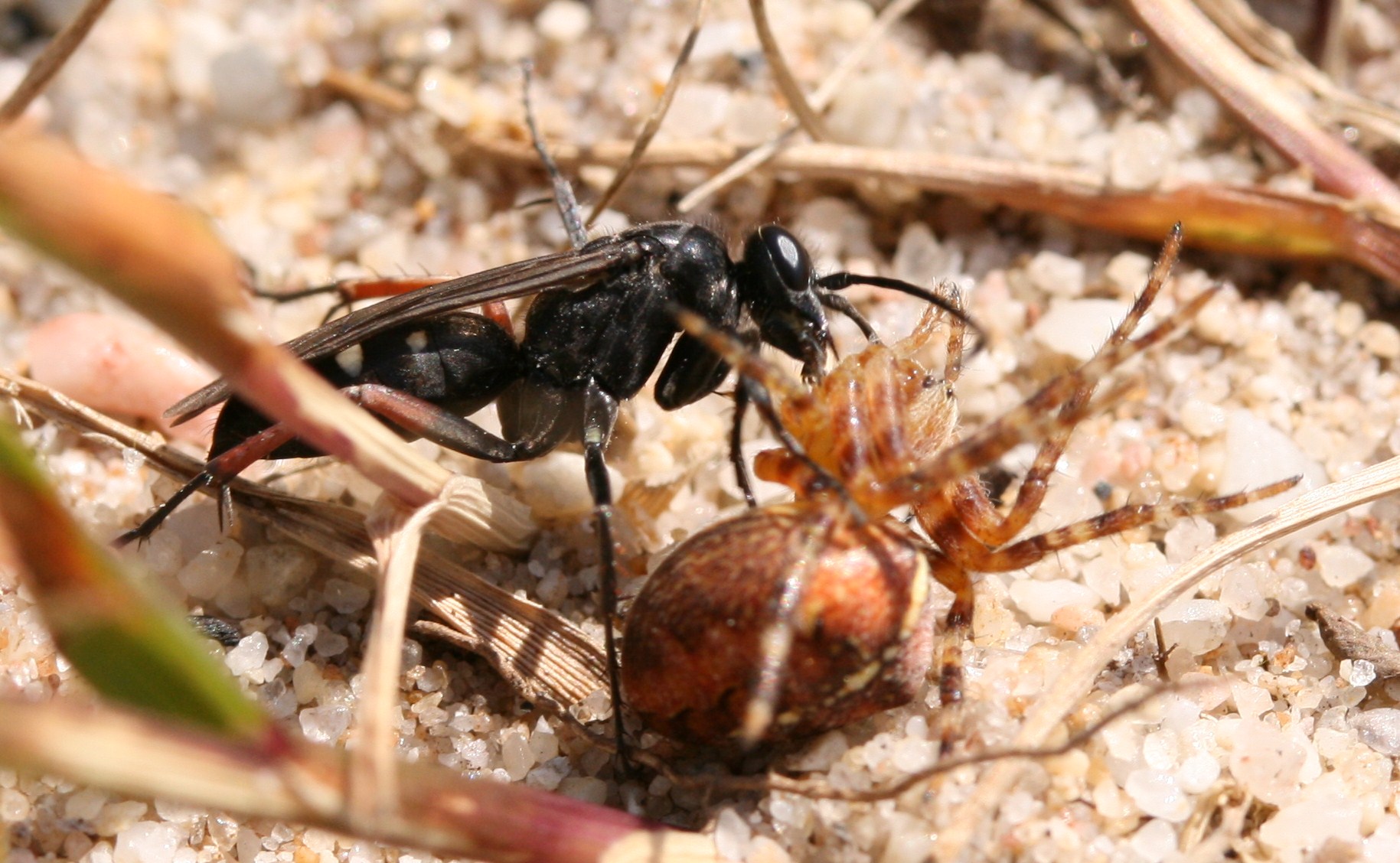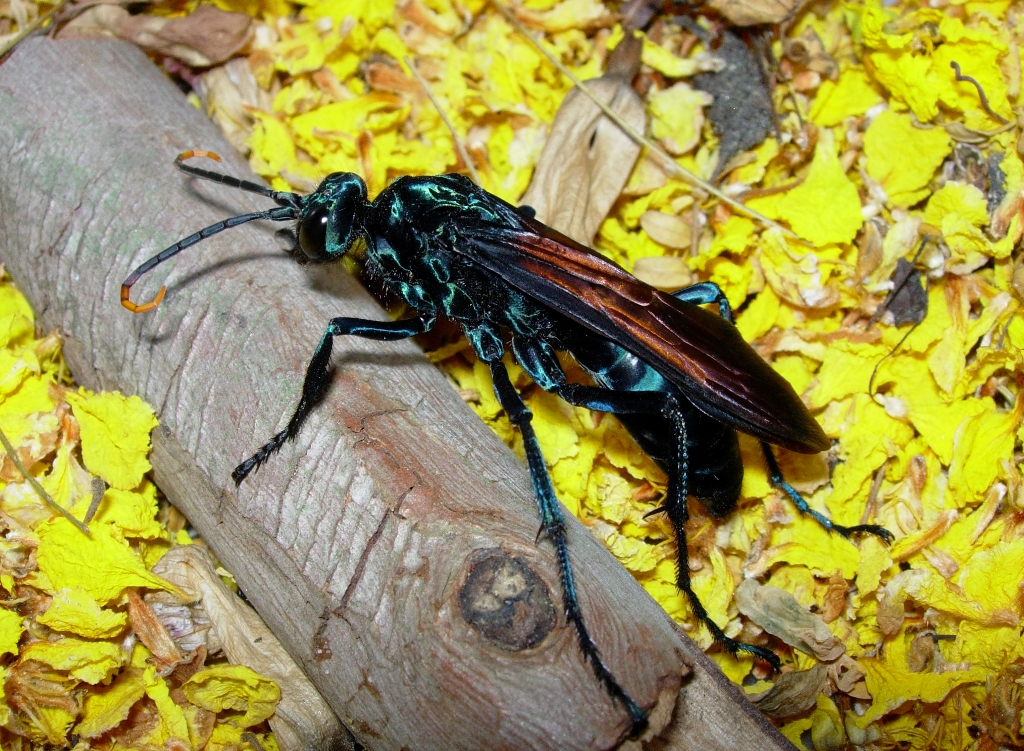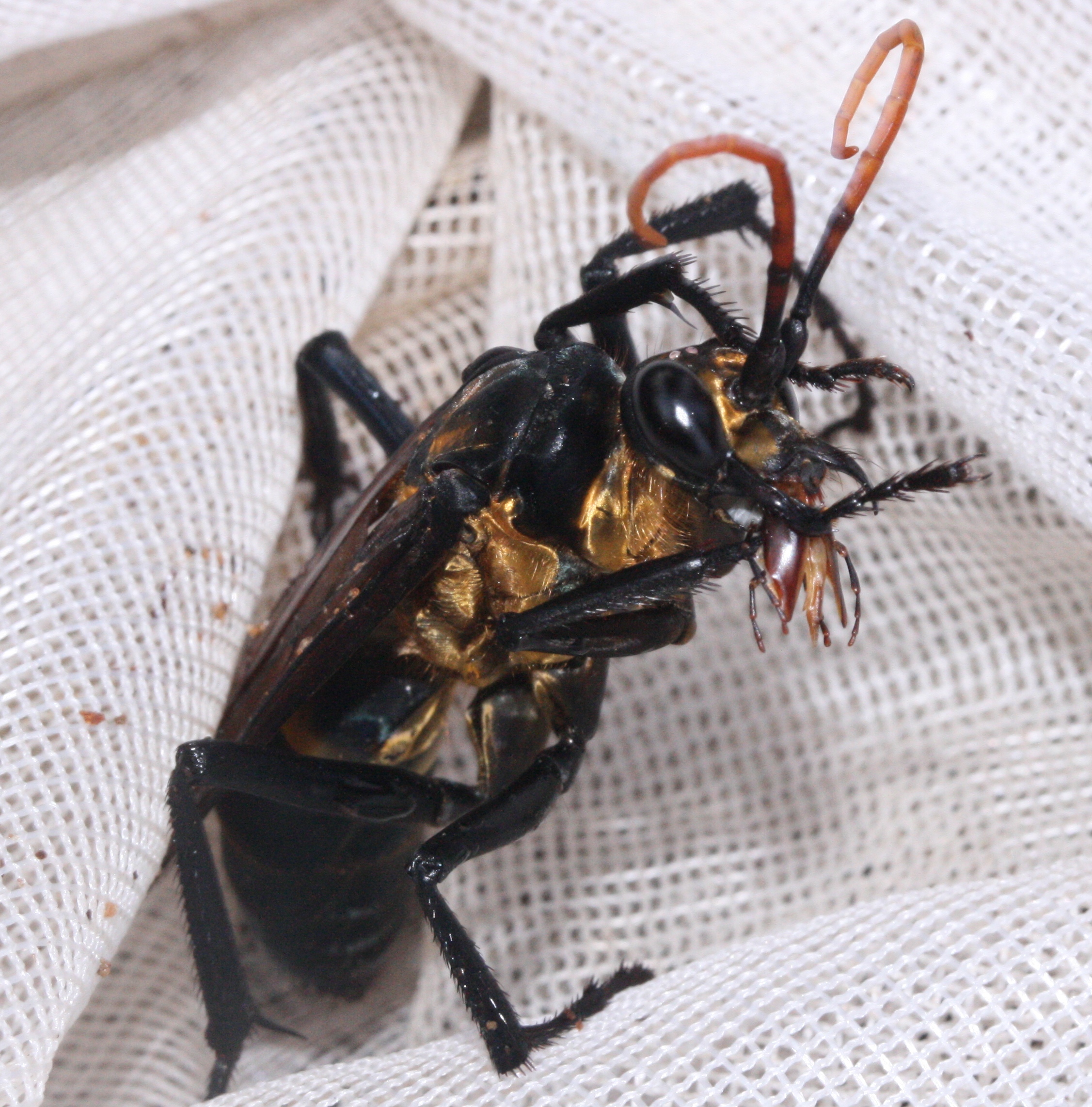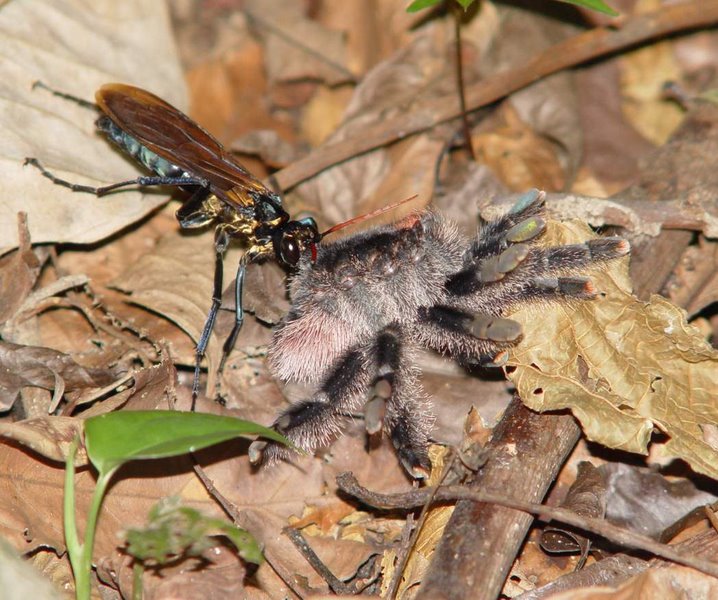There’s no need for that
Spider-hunting wasps, technically known as pompilids are about as mean as insects come. They range in size from no more than a centimetre long to beastly tropical species – the tarantula hawks – with a wingspan as large as that of a small bird. As their name suggests these wasps hunt spiders and just about any species of spider is fair game, although they appear to have a preference for those species that build webs or inhabit burrows. Even the largest spiders – the tarantulas – cower in their burrows when these wasps are on the prowl.
When a female pompilid finds some suitable quarry, a fight to the death ensues and although the wasp is equipped with some fearsome weapons the spider is no Softy Walter and any wrong move will end in the insect becoming an arachnid’s dinner. The wasp’s objective is to get the spider in a position where it can administer a dose of neurotoxic venom with its sting through the soft membranes linking the spider’s legs to its body. The wasp normally does this by wrestling the spider on to its back and bringing its devilish sting to bear. If the wasp is successful, the fast-acting venom paralyses the spider, leaving it helpless and thinking about how it might have done things a bit differently. Sadly, things are about to get somewhat worse for the spider, because the wasp doesn’t just eat it or something simple like that. Oh, no, the spider’s fate is far more unpleasant.
The wasp drags the spider to a suitable lair, which is often many metres away from where the struggle took place and must be a colossal effort for the insect – probably equivalent to you or I dragging a massively fat man over rough terrain for many, many miles. Here’s a pompilid (Episyron sp.) I found in Dorset, UK, dragging a garden spider (Araneus diadematus) to a suitable retreat:

The female might excavate a hole to house her prize or she might take over a vacant refuge, but she often does this before she goes looking for a spider, so relocating the hole is a remarkable feat of insect memory, but wasps and their kin, the bees and ants are masters when it comes to spatial awareness. Anyway, once the spider has been safely secreted away underground the wasp cleans it to impede the development of bacteria and fungi before laying a single egg on her prey or very nearby, in what is actually a nightmarish nursery.
The wasp’s work here is done, so she takes her leave and seals the spider in the nursery with her offspring before flying off to search for more hapless victims. In the darkness of the subterranean chamber the egg hatches and the larvae wastes no time in tucking into the living provisions left by its mother. It eats and grows rapidly, making sure to eat only the non-essential parts of the spider, because if it accidentally scoffs an essential part before its ready to pupate the spider will die, rot and the wasp larva will starve or succumb to microbial infections. Just how it knows which bits to leave alone before the time is right is a mystery, but as soon as it’s ready to confront the rigours of pupation it eats what’s left of the spider’s internal organs – the essential bits – and the spider finally dies.
In the tropics, the script is the same, but the actors are different and much bigger. The largest spiders, tarantulas, are hunted by wasps known as tarantula hawks. The largest of these, in the genus Pepsis, are genuinely terrifying insects. Here is Pepsis cupripennis, from Uruguay and I’ll think you’ll agree they are very impressive insects:

Here is a Pepsis species I netted in Brazil and it was a whopper – with a body length not far off 7cm. If this was hovering around your pint you’d have good reason to flail your arms and squeal like a girl – it was disturbingly substantial:

It was so big that when I caught a fleeting glimpse of it flying across a track I initially thought I’d seen a hummingbird; however, thoughts of benign feathered creatures were quickly dispelled when it landed. I bagged the brute with my net to get some photographs, but these wasps aren’t use to such familiar treatment so it was positively quivering with rage and because I didn’t have the spine to see if its sting was genuinely second only to the legendary bullet ant on the Schmidt Pain Index we needed something to subdue it, alas, there was no mallet to hand, but we did have some chewing tobacco. A little bit of the juice from the chewed up tobacco calmed the insect down enough to get some close-ups as it was leaving the net in a bit of stupor. These wasps have such painful stings there are hardly any vertebrates that are stupid enough to try and eat one, so they’re completely fearless and as soon as it left the net and regained its senses it simply went on its way, intent on finding its quarry, with us a few steps behind, observing it. We eventually lost sight of the wasp amid some dense undergrowth, but it really was an incredible animal.
Here is another big Pepsis species (P. frivaldskyi), also from Brazil, which has fought, paralysed and is in the process of dragging a tarantula (Avicularia sp.) to a suitable lair. The wasp weighed 0.67g and it dragged the 4.8g tarantula 30m over all manner of obstacles, including leaf little and roots to a little hideaway at the base of the tree, where the spider would ultimately meet its gruesome end (thanks to Felipe rego for the information and photos):

There’s more about tarantula hawks in Extraordinary Animals:
http://www.amazon.co.uk/Extraordinary-Animals-Encyclopedia-Curious-Unusual/dp/0313339228
Leave a Reply